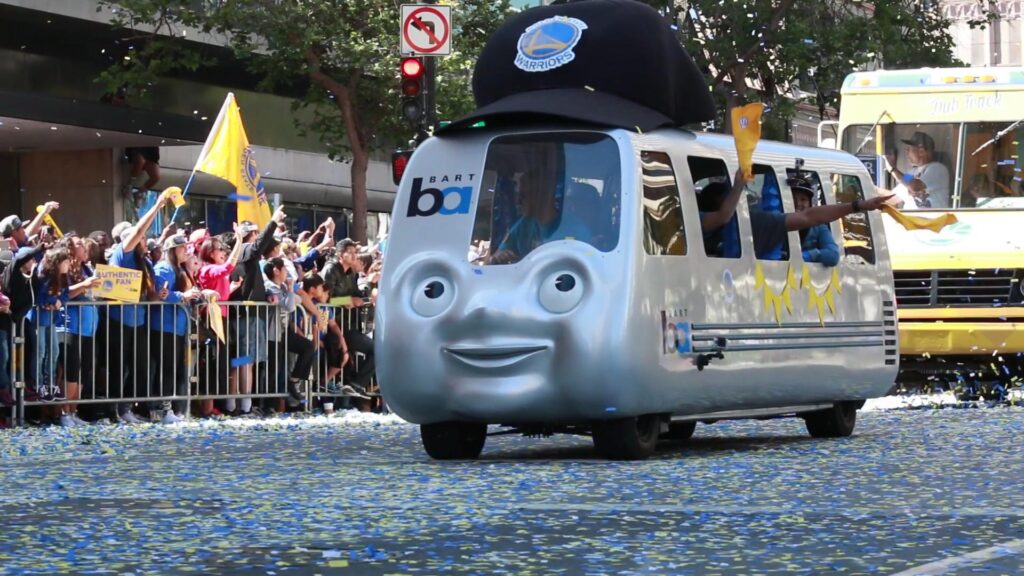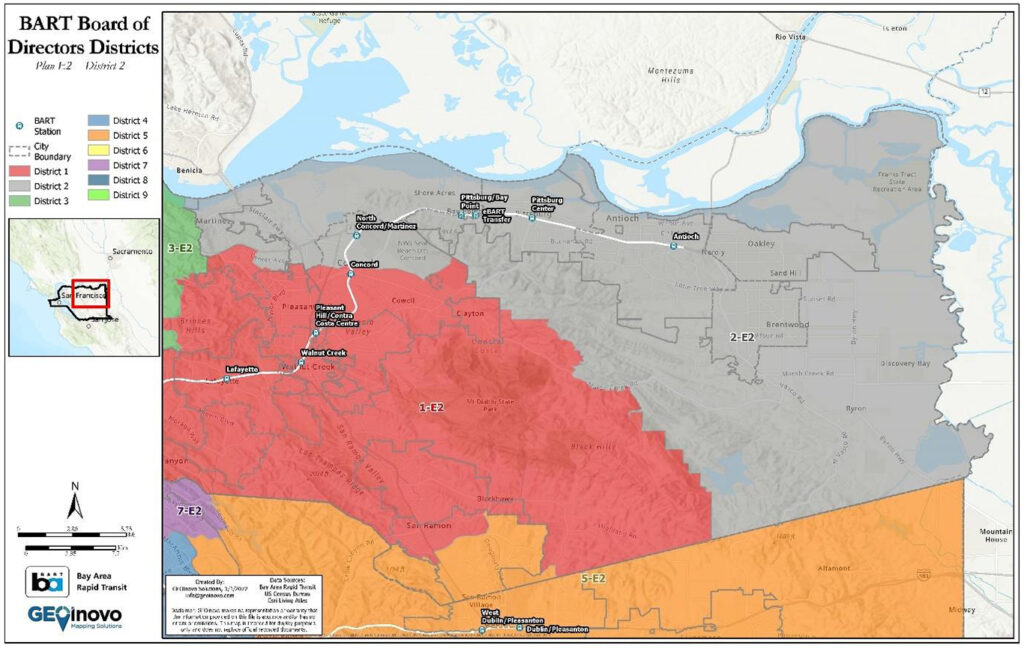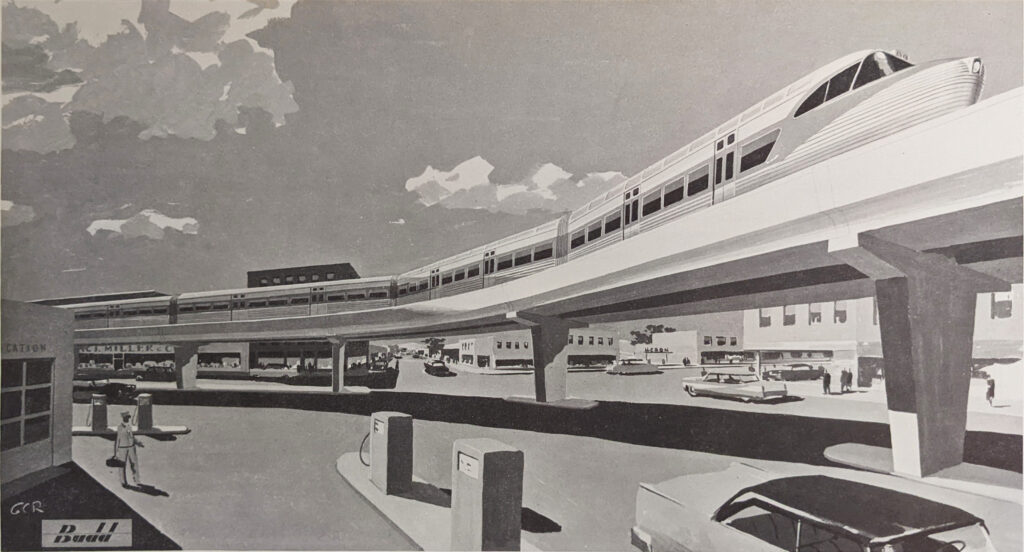
A rendering of a “basic supported system” train from the Parsons-Brinckerhoff report of 1956.
In celebration of BART’s 50th anniversary this year, we’re looking back at the transit system’s five decades of service and innovation in a new series of stories. BART celebrates 50 years on Sept. 11, 2022.
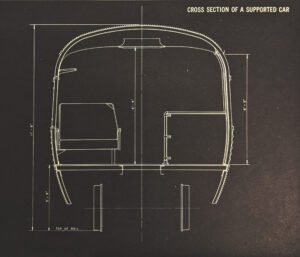
Rendering of a BART car cross section.
Deep in the BART archives at Lake Merritt Station, an unassuming large format book has been gathering dust. Just over 100 pages, the green cover has now faded, the pages yellowed. The cover title reads: “Regional Rapid Transit: A Report to the San Francisco Bay Area Rapid Transit Commission.”
Published in January 1956, the report is a crystal ball, peering into an idealized future of BART and the Bay Area of the 21st century. The New York-based engineering consortium Parsons, Brinckerhoff, Hall and Macdonald researched the report from 1953 to 1955. Within its pages emerges a portrait of a burgeoning Bay Area – population ~3 million– in desperate need of a high-speed, grade-separated regional transit system.
“We are firmly convinced that the answer to ever-increasing traffic congestion in the Bay Area lies in the utilization of … interurban rapid transit,” the report’s cover letter reads.
Since 1956, the Bay Area has more than doubled in population, with an estimated 7 million people now residing in the region’s nine counties and 101 municipalities – many of which are now served by a BART system born of the forward-looking Parsons-Brinckerhoff report.
The report is a significant document as it was the first major publication to envision what BART could be. In the 1950s, many were keenly following this yet-to-be-built mass transit system, according to Liam O’Donoghue, a local historian and the host of the podcast “East Bay Yesterday.”

Comprehensive Plan for Regional Rapid Transit, prepared for the San Francisco Bay Area Rapid Transit Commission by Parson Brinckerhoff Hall & MacDonald from 1956 shows extensions to Brentwood in East County and Crockett in West County and beyond, as well as to Livermore in Alameda County. Source: Erica Fischer | Flickr
“One of the reasons there was so much national attention on BART is because it was the first mass transit rail system to be constructed in the U.S. for 60 years,” O’Donoghue said. “It was not only a milestone for public transit, harkening to a new era, it was also a test case for urban mass transit rail systems moving forward.”
O’Donoghue said the report is significant for multiple reasons. For one, it provided a blueprint for one of the biggest construction projects in California in half-a-century. It also helped “sell” the transit system to a skeptical, tax-paying public.
“The report really had to make the case for BART to the public,” O’Donoghue said. “BART came very close to not happening, so the people promoting BART needed the informational ammunition.”
Devin Smith, a volunteer at the Prelinger Library in San Francisco, recently got a shock when a Parsons-Brinckerhoff report from 1956 was donated from the private collection of Jay Bolcik, a former BART Manager of Schedules and Services. The library contains many trade periodicals, including plentiful materials on transportation, so the donation fit well with the library’s existing collection.
Smith said he found the report “incredibly fascinating,” and was especially impressed by its size and scope.
“It’s always interesting to look at reports like these and contextualize why this one proposal got picked over other,” he said. “Seeing the BART system at such an early stage…it’s just amazing.”
The Bay Area, the Parsons-Brinckerhoff report concludes, required a rapid transit system to complement the area’s already-established network of highways. Traffic, even in the 1950s, proved a sore spot for the region.
“Today’s age of automobiles has brought with its miracles a level of travel discomfort, cost, and hazard that is critical,” the Parsons-Brinckerhoff report summary reads. “In the Bay Area, home now for some 3 million people, traffic problems are aggravating.”

Renderings of a supported car from the Parsons-Brinckerhoff report.
The report uses a series of phrases to stress the car problem: “heavily burdened,” “chaos,” “ever-mounting barrier.” Interurban transit would serve as a balm to soothe the Bay’s gridlock headache, while also facilitating urban development.
“The report is important now because the problem that BART was meant to deal with then – traffic – is still a problem here,” O’Donoghue said. “We need to keep expanding on projects like BART, whether it’s additional lines or some sort of connectors. We need to keep building these public transit systems because individual car use is really a dead end.”
The Parsons-Brinckerhoff engineers specify in the report that the new trains needed to travel at speeds of at least 45 miles per hour (BART trains now travel an average of 35 miles per hour with stops and can reach speeds up to 70 miles per hour). The report also states the new BART system needed to contain “comfortable seats for all passengers” on trains, provide service at short intervals, and construct stations at conveniently located and strategically positioned areas.
One fascinating aspect of the report is its portrait of a BART that could have been. BART as a monorail? BART trains with pneumatic tires? Nothing, at this stage in the transit system’s development, was overruled or overlooked.
Some train models the report examined include the suspended monorail in Wuppertal, Germany, the oldest elevated railway with hanging cars in the world; the Talgo Train, with its in-between carriage bogies; and a “Carveyor,” or continuous conveyer belt with cars atop. BART eventually nixed all these ideas for various reasons, including cost, feasibility, and reliability. The transit system settled on self-propelled cars that draw power from an electrified third rail and operate – perhaps notoriously — on a non-standard gauge width.
The report also puts forth four options for constructing the system with the following keep the system low cost, attractive, and as unobtrusive as possible.
“Low cost is always predominant and in the public interest; the aesthetics of the rapid transit structures is a major factor in determining general public acceptance of its form and its impact upon the value of adjacent properties,” the report states. “These basic objectives are often in conflict, however. The ideal combination of invisible structures at zero cost is impossible, and we must therefore make compromises.”
Construction options included surface transit, open-cut transit, subway transit, and elevated structure transit. Today, BART uses a combination of all four options.
As for the trains, the Parsons-Brinckerhoff report outlines that the system most likely to serve the Bay Area would be a “basic supported system,” with high-speed, lightweight cars featuring steel wheels on steel rails, powered by electricity. But the report didn’t write off alternative systems, such as suspended trains or rubber tires. It included renderings of some alternatives, which you can view above.

A potential design for the interior of the cars.
“The question of appearance,” the report notes, “always involves personal taste.” Future reports would outline in greater detail the look and feel of BART, but the renderings the report does provide depict transit specifically born out of the Space Age, with sleek and futuristic-looking bodies.
The report concludes with a simple thesis: “Some form of interurban transit [for the Bay Area] is necessary.”
“Unless it is willing to accept sustained congestion and the retardation of economic growth that would result, the Bay Area has no choice but to accelerate its transportation planning and construction,” the report concludes, continuing, “Concepts of large metropolitan cities served only by private automobiles are in the realm of physical and economic fantasy.”
Just under two decades later, many of the Parsons-Brinckerhoff report’s findings and recommendations would be put into action. Some of the original concepts continue to serve the Bay Area and its transit riders today.
According to O’Donoghue, the report serves as a reminder of what is possible.
“If we’re going to solve the Bay Area’s problems, like traffic, we have a whole playbook from BART history about how people were approaching these same issues in previous generations,” he said. “And that matters.”
If you’d like to read the report yourself, you can access a hard copy at a handful of libraries and historical societies around the Bay Area. You can view them on WorldCat by clicking here.
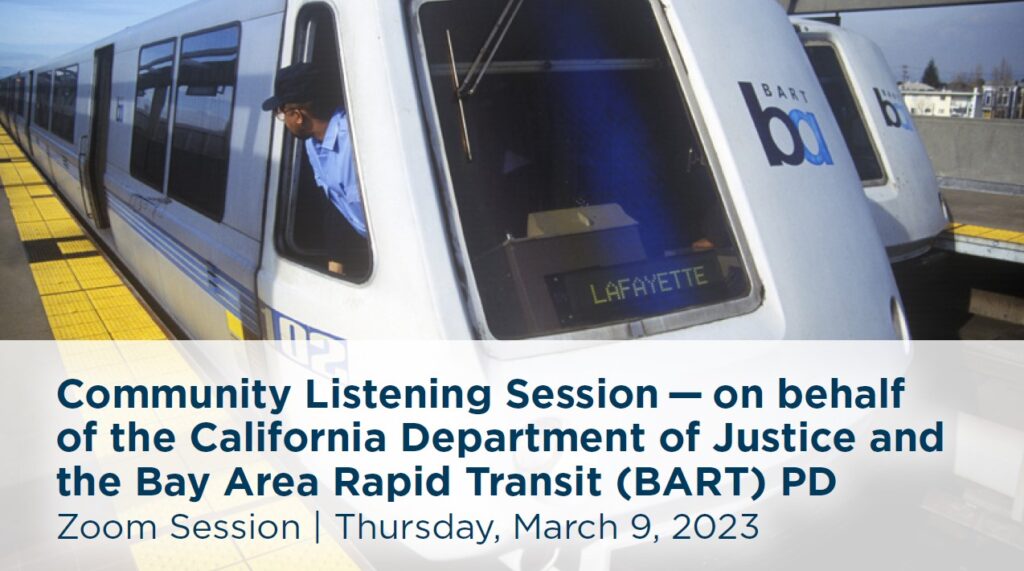








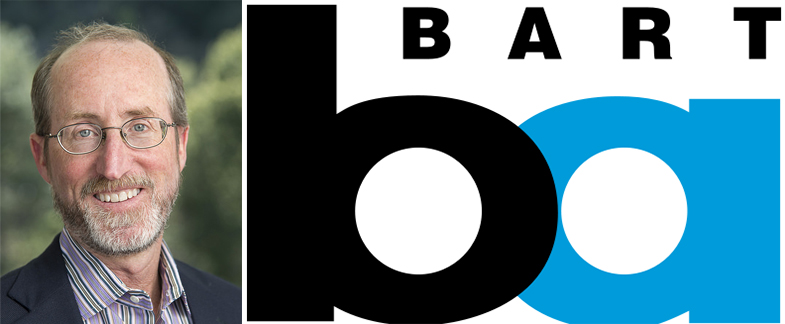
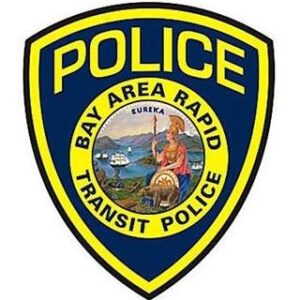 By BART Police Department
By BART Police Department